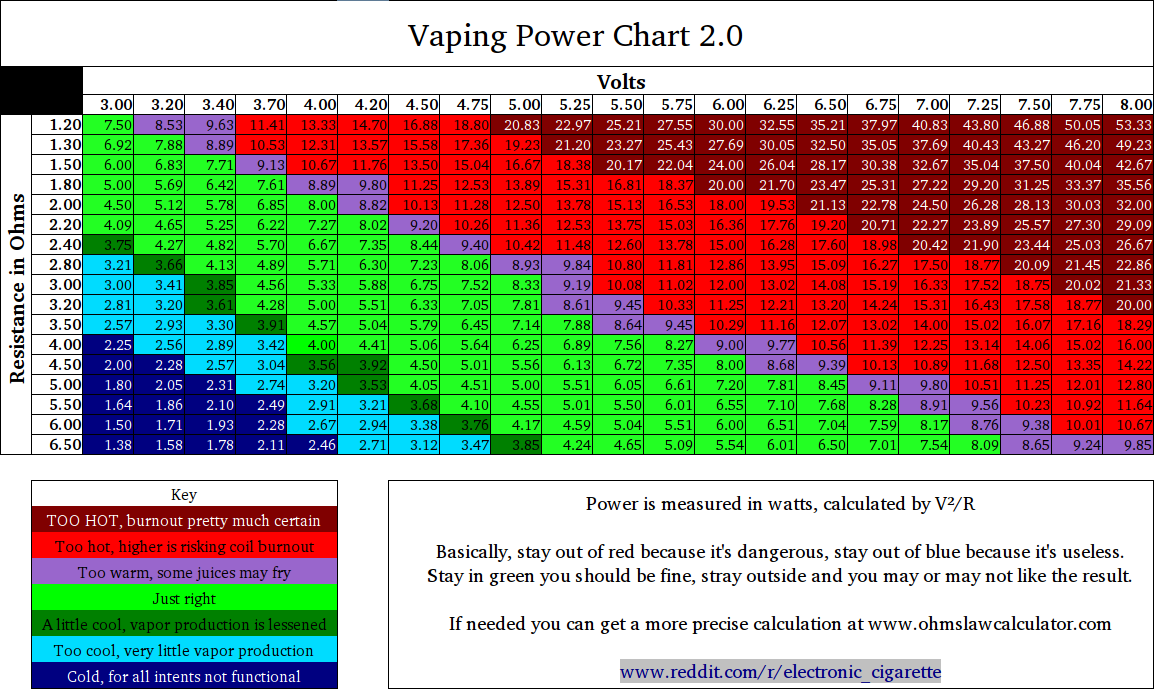Or to be simplistic - the
throat hit and taste of
juice flavors can change depending on what wattage they are vaporized at. "Delivery systems" (what holds the liquid and
delivers it to the heating element - like cartomizers or clearomizers) come in different resistances (ohms) and being able to vary the voltage of the
device means you can adjust the amount of power (watts) produced so you can find your own "sweet spot."
With a
variable voltage device, you can adjust the volts up or down to get where you want to be. With a
variable wattage device you set it at the power level you like (for example 8 watts) and the device will measure the resistance of the delivery system and adjust the voltage automatically to get to that wattage (although you may find you don't like 8 watts for all of your juice, so you can switch back to variable voltage and adjust it from there).
ETA: While I use several delivery systems with different resistances, I've found I prefer variable voltage, since I don't seem to like any of my juices at the same watts.

